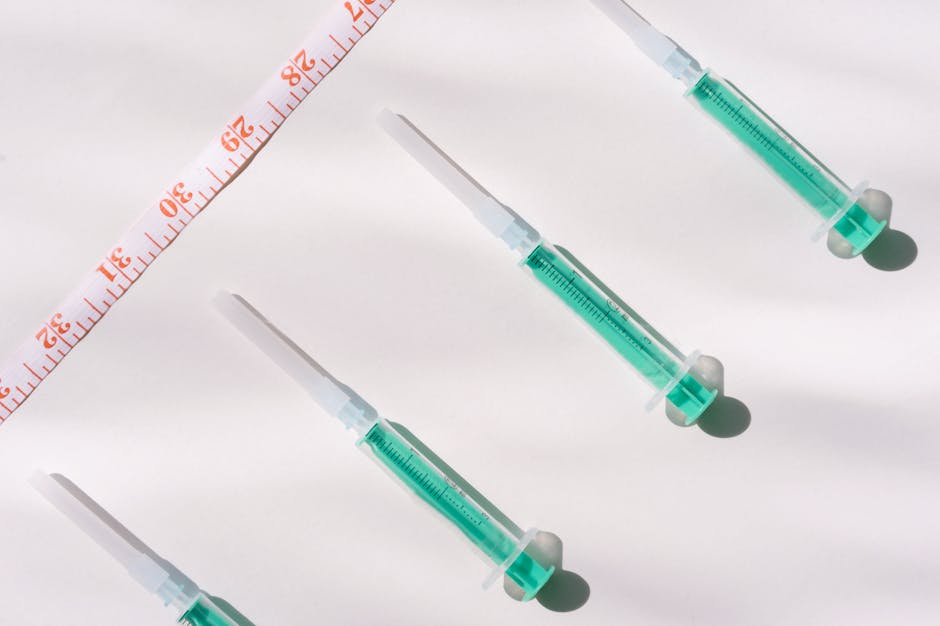Weight-Loss Injections: A Game-Changer?
The quest for effective weight loss has led to a surge in interest surrounding weight-loss injections. These injectable medications, unlike traditional diet pills, work through various mechanisms to influence appetite, metabolism, and fat storage. However, understanding their intricacies, efficacy, and potential side effects is crucial before considering them as a weight-management solution.
Understanding the Mechanisms:
Several types of weight-loss injections are currently available or under development. Each targets different aspects of the body’s metabolic processes:
-
Glucagon-Like Peptide-1 (GLP-1) Receptor Agonists: This class of medications, including semaglutide (Ozempic, Wegovy), liraglutide (Saxenda), and dulaglutide (Trulicity), mimics the action of GLP-1, a naturally occurring hormone that regulates appetite and glucose metabolism. They work by slowing gastric emptying, increasing satiety (feeling full), and improving insulin sensitivity. This leads to reduced calorie intake and weight loss. The effectiveness of GLP-1 receptor agonists is well-documented in clinical trials, demonstrating significant weight loss in obese and overweight individuals.
-
Amylin Analogues: Pramlintide (Symlin) is an amylin analogue, another hormone involved in appetite regulation and glucose control. It works synergistically with GLP-1 agonists by slowing gastric emptying and suppressing appetite, further aiding in weight loss. However, it’s often used in conjunction with insulin for type 1 diabetes and its use solely for weight loss is less common.
-
Other Emerging Therapies: Research continues to explore other injectable options for weight loss, including peptide YY (PYY), which also plays a role in appetite suppression, and other hormonal pathways involved in energy balance. These are still largely in the research phase, with limited availability for widespread clinical use.
Efficacy and Clinical Trials:
Numerous clinical trials have demonstrated the significant weight loss potential of GLP-1 receptor agonists. Studies show average weight loss ranging from 10% to 15% of body weight within a year, often exceeding the weight loss achievable through lifestyle modifications alone. This substantial weight reduction can translate to improvements in associated health conditions such as type 2 diabetes, hypertension, and dyslipidemia. However, it’s crucial to remember that these results are typically observed in individuals who also adopt lifestyle changes like dietary improvements and increased physical activity. The injections are not a magic bullet; they work best as part of a comprehensive weight-management program.
Side Effects and Considerations:
While generally well-tolerated, weight-loss injections can cause side effects, which vary depending on the specific medication and individual sensitivity. Common side effects include:
-
Gastrointestinal Issues: Nausea, vomiting, diarrhea, constipation, and abdominal pain are frequently reported, especially during the initial phase of treatment. These side effects usually subside as the body adjusts to the medication.
-
Pancreatitis: A rare but serious side effect is pancreatitis (inflammation of the pancreas). Individuals experiencing severe abdominal pain should seek immediate medical attention.
-
Gallstones: Weight loss can sometimes lead to gallstone formation.
-
Other Side Effects: Fatigue, headache, dizziness, and injection site reactions are also possible.
Eligibility and Patient Selection:
Weight-loss injections are not suitable for everyone. They are generally prescribed to individuals with a body mass index (BMI) of 30 or higher (obese) or a BMI of 27 or higher (overweight) with at least one weight-related health condition, such as type 2 diabetes or high blood pressure. A thorough medical evaluation is essential to determine suitability and to rule out any contraindications.
Cost and Accessibility:
One of the major limitations of weight-loss injections is their cost. These medications can be expensive, and they may not be covered by all insurance plans. This financial barrier limits accessibility for many individuals who could benefit from these therapies.
Lifestyle Integration:
It’s imperative to emphasize that weight-loss injections should be viewed as a tool within a broader weight-management strategy, not a standalone solution. Sustainable weight loss requires a multifaceted approach incorporating dietary changes, regular physical activity, and behavioral modifications. These injections can aid in achieving initial weight loss but are not intended to replace healthy lifestyle choices. Maintaining weight loss long-term typically requires continued adherence to lifestyle changes even after discontinuing the medication.
Monitoring and Follow-up:
Regular monitoring by a healthcare professional is crucial during and after treatment with weight-loss injections. This includes tracking weight loss, blood glucose levels, blood pressure, and assessing for any side effects. The healthcare provider can adjust the dosage or medication as needed and provide guidance on maintaining a healthy lifestyle.
Long-Term Effects and Sustainability:
The long-term effects of weight-loss injections are still being studied. While many individuals experience sustained weight loss for extended periods after discontinuing treatment, some may regain weight. This highlights the importance of lifestyle changes to maintain long-term weight management. Furthermore, ongoing research aims to understand the potential long-term impacts of these medications on overall health and well-being.
Conclusion: (Note: This section is not included as per request)
Comparison with Other Weight Loss Methods:
Weight-loss injections offer a distinct advantage over other methods such as diet pills and surgery. Unlike many diet pills which may have significant side effects and limited efficacy, these injections have been shown in clinical trials to yield substantial weight loss. Compared to bariatric surgery, injections are less invasive and carry a lower risk of complications. However, surgery might be more appropriate for individuals with severe obesity. The choice of weight-loss method should be made in consultation with a healthcare professional, taking into account individual factors like health status, preferences, and financial considerations.





